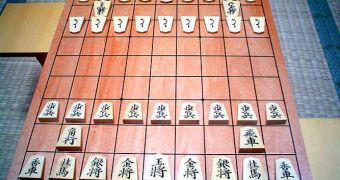A group of investigators in Japan announces a new series of discoveries they made on the origins of expert intuition, which could change the way we look at the human brain. The research team was basically able to identify the neural basis that underlie this ability.
Experts with the RIKEN Brain Science Institute (BSI) took a closer look at the brains of professional shogi players, and used brain-imaging technologies to observe their neural activation patterns in response to the traditional Japanese board game.
It could be argued that intuition is one of the main factors that separate amateurs from professionals in many fields, and the game of shogi makes no difference. This was evidenced when researchers learned how expert player generate optimal moves quickly, and also without being aware of them.
In a paper describing the findings, published in the latest issue of the top journal Science, the group pinpoints the exact areas of the brain that allow shogi masters their amazing skills.
This discovery also casts more light on the neural basis of intuition, an ability that some have innately, while others need to cultivate. What is certain is that cognitive expertise is indeed governed by neural mechanisms, and also that imaging technologies can tease those pathways out.
RIKEN experts decided to use functional Magnetic Resonance Imaging (fMRI) to look at how the brains of expert shogi players lit up when they were moving pieces on the board. For control, the team also surveyed the brains of amateur players.
It immediately became apparent that professional players were capable of “seeing” board patterns right away, and generated moves to fill those patterns without thinking of it consciously. Experts were able to identify two brain areas that played a role in this form of intuition.
One of them is called the precuneus, and can be found in the parietal lob. Previous studies have found that the structure plays a role in integrating sensory information. The second one was the caudate nucleus of the basal ganglia, which was involved in generating next-moves.
The main implication of this research is that brain science and cognitive psychology research can indeed be connected and integrated into a complex field of study, that might help experts gain insight into some of the brain's most well kept secrets.

 14 DAY TRIAL //
14 DAY TRIAL //